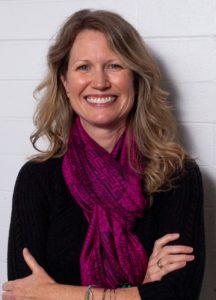
During my time developing and researching CQAPI (Comprehensive Quality Assurance and Performance Improvement) techniques for operators, I have become enamored with the history and the process of incontinence management that still exists today with little or no innovation.
Incontinence is a socially taboo topic with stigma, specifically for the generation of older adults dealing with it today. Yet, incontinence management is the backbone for caregivers of older individuals, especially those living in institutional settings.
Over 50% of nursing home residents are incontinent, and it is considered a risk factor to be placed in an institutional setting, according to a study published in Gastroenterology Clinics of North America. It is one of the largest and most common chronic conditions that challenge post-acute and acute care in big ways.
Incontinence was first mentioned in Egyptian manuscripts in 1500 BC. Today, in 2022, the evolution of products to help incontinence care in older adults has remained primitive and still has quite an effect on our environment. Incontinence management is a simple process yet, it greatly impacts staff being the largest work duty they are responsible for providing.
When looking at incontinence care through the CQAPI lens, it was surprising to learn from some research that chronic conditions were found to be “associated with significantly higher odds of comorbid urinary incontinence,” according to a study published in CMAJ Open.
Incontinence can and does have a negative impact on so many factors of a resident’s quality of life that it cannot go ignored as part of an ongoing CAQPI process. I have been poking around and chatting with some industry experts, operators and innovators. In this process, I came across an example of a fantastic CQAPI process, in which the team performing the process was unaware that they were in fact doing a CQAPI as opposed to the antiquated QAPI process.
Wendy Carpenter, CEO/Executive Director of Eden Hill Communities, located in New Braunfels, Texas has been leading her community and staff through a pilot of introducing a “smart brief” that has not only changed the way they have provided incontinence care for a history of decades, but “transformed the way they provide care from reactive to proactive incontinence management.”
In discussions with her about this process improvement, her statements were very profound.
“Significant and meaningful change…everyone should be excited about this revolutionary innovation in incontinence care, “ Carpenter stated. They executed the pilot quickly due to the ease of implementation, just changing the type of brief they were using to the “smart” ones but using them in the same way.
As a result, Eden Hill found that the staff were no longer having to do time-wasting rounds to check if residents’ briefs were wet. Instead they were able to be informed real time that a resident has had an incontinence episode and were able to address those in need immediately as opposed to every two hours upon rounding.
Providing a proactive approach, they anticipate that ability to reduce falls, risk for pressure ulcers as well as quicker detection of Urinary Tract Infections with quicker, more appropriate treatment. This can potentially reduce the risk of further infection along with pain and/or confusion that can come with UTIs in older adults. All of this positive change could be attributed to one small procedure and supply change. It was a game changer for Eden Hill and can be for all long term care providers who are willing to just dive into innovation.
The entire premise around CQAPI is going back to basics, bottom up, and broadening your team beyond the usual players. The Eden Hill team leveraged a relationship with the “smart brief” manufacturers and suppliers in order to utilize best practices learned by others before them. They also determined how to track change or impact as well as determining procedures for incontinence management that can directly relate to other quality measures.
The comprehensive oversight is what made this pilot successful. Don’t know how to connect your team with those that can assist in providing comprehensive oversight? You can start by contacting the companies that manufacture products you use, community resources (i.e., wound care clinics, home health companies) and others that can provide multiple perspectives on operational procedures or systems. You can also connect with associations, organizations or supply chain vendors.
This gap in connectivity is exactly why I started the first and only virtual Global Agetech Innovations Laboratory (GAIL) in collaboration with Aging 2.0 and Austin’s Chapter of Aging 2.0. The GAIL officially launched in October 2022, accepting membership for free. Several innovative start-ups and gerontologists are out there looking for opportunities to connect and collaborate on CQAPI teams but are not sure how to find each other, or they do not realize they have similar missions and visions.
The CQAPI process can be an effective tool to allow operators to broaden their teams’ perspectives on quality and problem-solving globally as a member of the GAIL. Education and resource materials will be available towards the end of the year on the GAIL website for members as well as showcase opportunities on projects happening within the virtual laboratory. I can’t wait to see how this concept can help innovation grow in the field of aging while helping operators realize that they are not alone! There are passionate people out there that care and want to help.
Do you have a CQAPI story/experience? Please drop me a line at [email protected], I would love to hear more about it!
Amy Chidester, LNHA, is a certified gerontologist and caregiver advocate, a licensed nursing home administrator/preceptor in skilled nursing and assisted living, and provides consulting services to caregivers, operators, innovative Agetech start-ups, and educational institutions. Most recently, Amy is the founder and director of the Global Agetech Innovations Lab (GAIL).
The opinions expressed in McKnight’s Long-Term Care News guest submissions are the author’s and are not necessarily those of McKnight’s Long-Term Care News or its editors.




